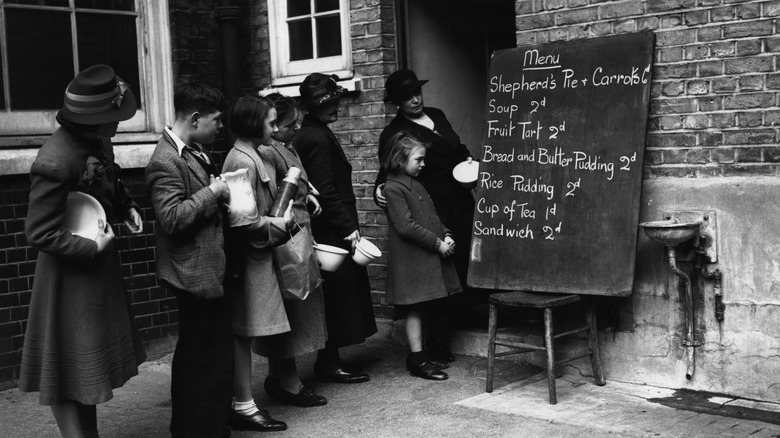The Unexpectedly Ancient Origins Of Restaurant Menus
The history of restaurant menus is, in many ways, simply a history of innovation and change. QR codes are a great example. The technology for QR codes was created in Japan during the 1990s, notes The New York Times. However, they weren't commonly used in U.S. restaurants before the coronavirus pandemic. Although initially added as a safety measure, restaurants soon came to appreciate the many benefits of QR codes, which include digital payments, tracking the sales of menu items, and monitoring the preferences of individual customers.
But even before QR Codes, restaurant menus were changing and evolving. During the 1990s, when QR codes were still in their infancy, desktop publishing software was entering the mainstream. The latter, according to OpenTable, had a massive impact on the restaurant industry. For the first time, restaurants were able to easily change their menus on a daily basis, adding new menu items or specials. This new menu freedom also unleashed a flurry of creativity from chefs and restaurateurs in terms of how menus were written and formatted.
This history of evolution and change goes all the way back to the first restaurant menu, which was written on a stone tablet.
A short history of restaurant menus
The first extant menu is a stone tablet from a party thrown by an Assyrian king almost 3,000 years ago. According to Mental Floss, Ashurnasirpal II invited about 70,000 people to his epic bash in 879 B.C., which lasted for nearly a week and a half. The commemorative tablet, now known as the "Banquet Stele," does feature descriptions of food, but it wasn't really a menu in the sense that we know it — meaning a listing of dishes from which one orders.
The first true restaurant menus probably originated in China during the early 12th century Song Dynasty, History explains. The innovation grew out of travel between the cities of Hangzhou and Kaifeng since the regional dishes offered in each locale's eateries were largely unknown to visitors. Thus, menus were born. In the beginning, they were of the visual variety — essentially, display dishes — but menus soon evolved into a recognizable format. Jacques Gernet's book, "Daily Life in China on the Eve of the Mongol Invasion," notes that by the 13th century, there were taverns where "a menu was handed to customers, from which they could choose the dishes they wanted."
Western menus, meanwhile, evolved contemporaneously with the development of French restaurants in the late 18th century, per Mental Floss. The first restaurant menus in the U.S. were offered at Delmonico's in New York City. Historical evidence confirms their use in the iconic restaurant by the 1830s.

